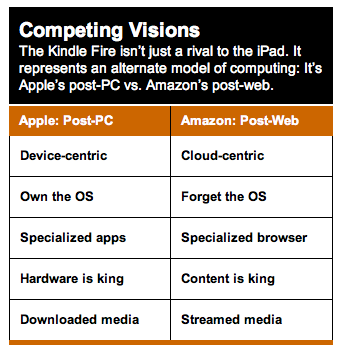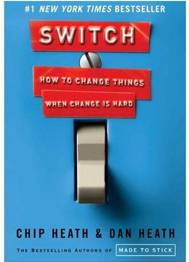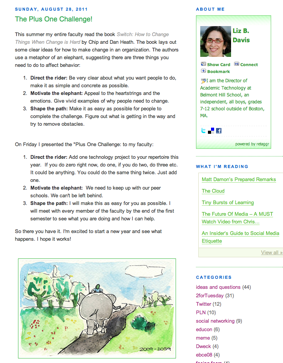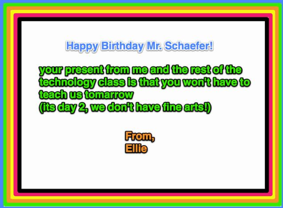
Image: Apple\’s Eyes Studio / FreeDigitalPhotos.net
Over the last few weeks, more students are looking for audiences for their writing and stop animation movies. Mostly the avenue chosen is to send out email messages individually to students and teachers or to a conference where all students can read the request. I think this is a great indicator of the changes that are taking place not only with our students but also with teaching and learning. As the Innovation and Learning Cohort continues to discuss the book: The New Culture of Learning we run into this shift in each chapter. While we could feel threatened by it, I think we need to realize the power this affords us in our classroom. We no longer have to be the smartest person in the room, but do need to be the wisest. This wisdom will allow us to guide the learning, asking questions that allow learners to go further in their thinking and learning as well as modeling that learning is something that does not stop. The changes taking place in education are thrilling even when I am not sure what comes next.
There will be those who read the student writing below and wonder why the writing is not essay or formal quality. I believe this is a new informal writing that is more conversational then it is formal so while I too cringe at some of the errors, I also believe that we have to allow the students to own their learning and at times learning is, well messy.
I asked the students if it was OK to blog their requests so here they are. If you have a moment, add a comment and let them know what you think.
Ashwin writes:
MORE!!! A observation on blogging by: Ashwin S.January 9th, 2012 Tagged blog, more, personal I’ve noticed over the time I’ve been blogging that most people have the same overwhelmingly feeling. That they want more comments more replies or as I phrased it in my title they want MORE!!! Well you think that I am stating the obvious because who wouldn’t want people to see what they were writing that’s the whole point of blogging isn’t it? Well I think that a lot of people want more comments because of human nature. The more people pay attention to you the better you do in life. Even I am feeling like I want more comments (So please comment) it’s just the way we are. A common phrase I say is the perfect way to describe this observation. That phrase is “That’s just life”. http://pdroom212.edublogs.org/2012/01/09/more-a-observation-on-blogging-by-ashwin-s/
Students in sixth grade have really taken to blogging as you can see from some of their posts. I hold great hope that we can begin to see more teachers use this method of authentic writing with their classes.
Alex G sent out this message to a select group of people both at our school and outside of our school:
You may have already gotten an email message like this from me (Alex G.) or Gus L. but we’re just really trying to spread our stop-motion videos to the world. Me and Gus make LEGO stop-motion on imovie and are going to start using ikitmovie (agreat stop-motion sowtware) which I got a few days ago. I’m currently putting my BEST VIDEO YET on youtube so it will be visible probably tommorrow (thurs. january 12). It’s called The Gang, a LEGO STOP-MOTION and don’t worry none of our or my videos are inappropriate unless you say clay blood or lego guns are but if i can stand watching it, you probably can too. I’ve sent this to my advisory and many other 6th graders and 5th and 6 grade teachers
If you go to youtube or google (and yes, google) just look up in search: “stopmotionbro alex lego” and some of my videos will come up and in the description of the video, if it says stopmotionbro (me) and doofuzz123 (that’s gus) that means we bothmade it. We’ve only made a few together though. I make them on my own out of lego, clay, caplas, puppets, and on paper. My best Videos will say in the description, used IKITMovie.
This is not chainmail but it would be great if you did send this to or tell other people about our videos. thanks and enjoy the videos!
ps, I CURRENTLY HAVE 999 VIEWS FROM 2 MONTHS OF POSTING VIDEOS SO I ATLEAST WANT 1000 BY THE END OF THE DAY but i don’t need to worry because i get about 50 views a day.
Alex G. 6th grade student
Gus and Ian sent out this message. Clearly Gus is working with many students so must be a good collaborator.
Ian L. and I created a youtube account. It is IGLProductionz. We are uploading videos DAILY, and we hope that you subscribe, as it means a lot to us and will encourage us to make more videos!
So when you hear about how teachers need to harness the passion of their students, this, I believe, is the passion we are talking about. What would happen if these students were directed to create videos for subjects and concepts in the classroom as well as the ones they are passionate about like stop animation and Minecraft? Besides, these students are learning about copyright, fair use, Creative Commons and other 21st Century issues.
Since YouTube is blocked at school, all of this work is taking place outside of school and with their parents knowledge and support.
Here’s to a bigger audience for your teaching and learning.











 Scott H. took a different approach as he created a VoiceThread with a simple message. He knows that I see every VoiceThread made at Durham Academy so his gift would be delivered automatically. He created it sometime yesterday.
Scott H. took a different approach as he created a VoiceThread with a simple message. He knows that I see every VoiceThread made at Durham Academy so his gift would be delivered automatically. He created it sometime yesterday.